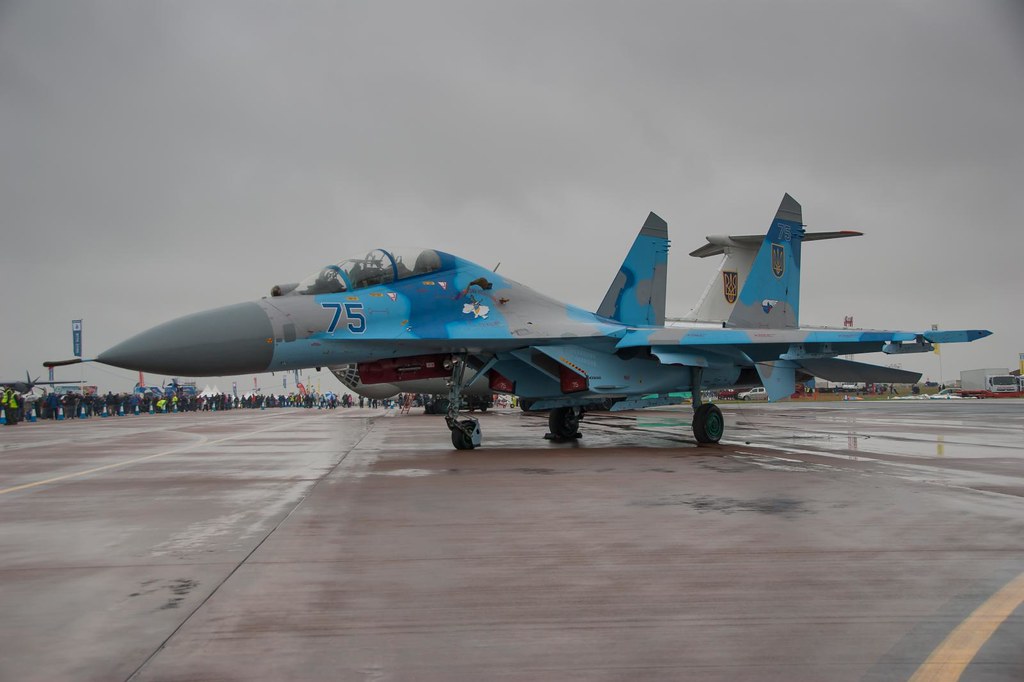
Ukraine’s air force pilots, despite being outnumbered by Russia, are employing a tactic reminiscent of the US Air Force during the Vietnam War to challenge the skies above the 600-mile frontline.

Recent videos show Ukrainian pilots carrying out “wild-weasel” missions, where they entice enemy antiaircraft defenses to target them with radar.

By tracing the radar waves to their origin, Ukrainian pilots respond with weapons such as the AGM-88 high-speed anti-radiation missiles (HARMs) before Russian surface-to-air missiles (SAMs) can lock onto them.

These missions, perilous as they are, have become a crucial aspect of Ukraine’s defense against a Russian force with an imposing air capability.

At the heart of these missions are the US-made AGM-88 High-speed Anti-Radiation Missiles (HARMs), which have equipped Ukrainian pilots with Suppression of Enemy Air Defenses (SEAD) and Destruction of Enemy Air Defenses (DEAD) capabilities.

With a range of approximately 90 miles, HARMs can target and neutralize enemy radar even after they have been turned off, offering a significant edge in electronic warfare.

Adapting HARM for Ukraine is challenging due to the incompatibility of old Soviet-era jets like the MIG-29 and the Su-27 fighters with modern Western technology.

Recently, US Undersecretary of Defense for Acquisition and Sustainment William LaPlante mentioned that Ukraine had resorted to using iPads to try to make their jets compatible with Western weapons.

It was mentioned that “They’re flying it in conflict like a week after we get it to them,” illustrating the urgency and adaptability inherent in the Ukrainian response.

However, the dynamic nature of warfare is evident as Russian SAM operators have adapted their tactics in response to Ukraine’s use of HARMs, shifting the nature of engagements to be more suppressive rather than outright destructive.

As a result, HARM launches compel Russian operators to deactivate their radars and reposition, creating opportunities for Ukraine to deploy other strike systems with decreased risk of interception.

Amid these tactical evolutions, there is a strategic chess game unfolding over the prospect of delivering F-16 fighter jets to Ukraine.

While the Soviet-era jets have been successfully modified to fire HARMs, they lack the full capabilities of their modern counterparts.

The upcoming delivery of F-16s, as announced by countries like the Netherlands and Denmark, is anticipated to bolster Ukrainian air superiority significantly.

“Ukraine is putting great emphasis on SEAD and DEAD missions,” remarked Frederik Mertens, a Strategic Analyst at the Hague Centre for Strategic Studies, highlighting the significance of these efforts. Ukraine’s commitment to these operations underscores the importance of air superiority and the relentless pursuit to counteract Russia’s formidable GBAD systems.
Relevant articles:
- Ukraine’s pilots are flying high-risk ‘wild weasel’ missions first developed in the Vietnam War by the USAF, says … , Yahoo News UK, 05/11/2024
- Ukraine’s pilots are flying high-risk ‘wild weasel’ missions first developed in the Vietnam War by the USAF, says defense analyst, Business Insider, 05/11/2024
- Ukraine’s pilots are flying high-risk ‘wild weasel’ missions first developed in the Vietnam War by the USAF, says defense analyst, Yahoo Canada, 05/11/2024
- Ukraine manufactures 8 Bohdana howitzers monthly — report, Yahoo Singapore News, 05/11/2024
- US F-16s could play a vital role in isolating Crimea and humiliating Putin, says defense analyst, Yahoo Singapore News, 05/11/2024
